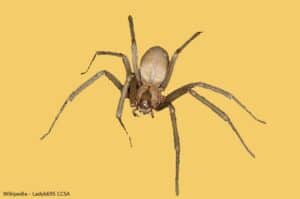Ant Pheromones Identified
First identified in 1971, scent trails of ants (pheromone trails) have been the subject of many entomological studies. When Atta texana, “leaf cutter ant” pheromones were first identified, it inspired intensive research on numerous species of ants and other social insects such as bees, wasps, and termites.
The Use of Pheromones by Social Insects
The ability to use chemicals to recruit fellow colony members is well known in social insects. Most social bees and wasps use an alarm pheromone to alert the hive of an intruder and this provides a collective message to defend the hive from harm. Termites use pheromones to mark the trail from any cellulose food source that has been found back to the nest. When their fellow termite colony members detect the scent trail, they will follow the pheromone back to the food.
Necrophoresis – Getting Rid of Unwanted Colony Members
Two different pheromones play a part in another group effort in a nest: “necrophoresis”. Necrophoresis is a behavior in social insects in which they carry the deceased colony members out and away from the nest so as to not have carcasses that are diseased spread bacteria, fungi, or viruses within the group. In general, pheromones are one of the ways that a group of social insects recruit the masses in the hive, nest or gallery to perform work for the common good of the colony.
Essential Pheromone Detection for Survival of Social Insects
The ability for insects to lay down a pheromone chemical trail for their fellow colony members to follow to forage for food is an amazing and advanced way of rapidly adapting to and utilizing their environment to allow for the growth and success of the individuals in the nest population. Exactly when this process evolved in the arthropod world is not pinpointed, but all of the advanced social insects use this highly specialized method to assure the health and success of the colony and is one of the hallmarks of more highly developed insect species’ biology and behavior.
The ability of ants to act in a coordinated manner via pheromones is central to their ecological dominance and success in their terrestrial ecosystem. Intra-colony communication is achieved by certain seriochemicals. Besides the use of these chemicals in foraging, these materials organize collective efforts such as reproduction, defense of the nest, and colony relocation.
Argentine Ant Trail Pheromone
One of the first chemicals implicating Argentine ant trail pheromone research was (Z)-9-hexadecanal. This was thought to be the key component of Iridomyrmex humilis (Argentine ant) trailing pheromone, which allows this species to dominate habitat and sources of food due to the ants’ ability to rapidly recruit and mobilize workers. This gives the invading Argentine ant colony the ability to oust indigenous species from the habitat, thus dominating that particular ecological niche.
Later studies explored the use of (Z)-9-hexadecanal as a possible way to manage Argentine ant populations, either by disruption of the trails, or by diverting ants to an area away from the structure that they were invading. These studies eventually pointed to two other more dominant chemicals: trans,trans-dolichodial (dolichodial) and cis,trans-iridomyrmectin (iridomyrmecin). It was unclear as to how these two materials were perceived by the ant in conjunction with (Z)-9-hexadecanal.
Ant Trail Pheromone in the Lab
When scientists tried to reproduce trailing in the ants in the lab using dolichodial and iridomyrmecin, they had mixed results. When given a choice, some ants still followed the “natural” trail, even if there was a high concentration of all three chemical components in an alternate trail that had been introduced artificially in the lab setting.
One explanation is the possibility that the (Z)-9-hexadecanal is released by the pygidial gland, where it is stored, directly into the headspace. This perhaps releases recruitment pheromone into the air, stimulating fellow colony members to follow this pheromone plume.
Other ant species have been studied and have been positively found to use a pheromone plume. Pachychondyla analis does this by releasing the chemical into the air, which makes their nestmates follow the odor plume.
Other ants such as Crematogaster castanea store pheromone in special tibial glands instead of the pygidial gland.
Recreation of pheromone plumes in the lab proved difficult and made for inconclusive results. Studies are still underway in many laboratories worldwide to explore the use of pheromones for ant and other social insect control. In general, there is still much work to be done to try to utilize trail pheromone chemistry in urban pest ant management.
The many chemicals used by different insect species to mobilize trailing, foraging, defense, and other advantageous behavior in their fellow colony members are a constant challenge to scientists. Each year more and more materials and behaviors are discovered in insect populations worldwide. In the years to come, perhaps there may be ways to formulate chemicals that will manipulate insects, ants in particular, to forage away from structures, therefore reducing the use of pesticides to control them.
(Photo and graph by Dr. D.H. Choe, University of California, Riverside. Used with permission.)


